First United Methodist Church (Salisbury, NC)
1980 Schantz / 2009 Parkey - 3 Manuals / 53 Ranks


Date
2009
Category
Renovations & RestorationsAbout This Project
First United Methodist Church has maintained a strong leadership role in the Salisbury, North Carolina, community for well over 100 years. In 1980, the church installed a new 3-manual and 53-rank Schantz organ in the sanctuary. In 2001, we removed all exposed pipework, covered exposed chestwork, and sealed chamber openings while the sanctuary was being repainted. We also re-leathered all internal pipe valve actions and windchest primary actions.
By 2005, it was becoming clear that a recurring humidity problem was taking its toll on the organ. Chest action and pipe failures became more apparent. In 2008, the Board of Trustees signed a contract for the complete replacement of reed stops, 9 ranks in total, and an updated console. The console was returned to our shop in Norcross, Georgia, during the summer of 2008 for complete refinishing and renovation. It now features a new relay and capture system using Solid State Organ Systems components. The capture action offers 100 levels of memory with Solid State Organ Systems’ “Any Piston Next” sequencer. The console’s internal dolly system for mobility had collapsed, rendering the console difficult for one person to move. That dolly system was restored and reinforced. New interior jambs of burled walnut housed the new drawknobs of ebony and maple woods. These complemented the new reverse color tracker touch keyboards with ebony naturals and maple sharps. Console renovations were completed in fall of 2008.
The original 1980 organ possessed a sound indicative of the 1960s and 70s neo-Baroque era. The organ favored a tone that was very bright but failed to fill the room and lead congregational singing. The fluework of the organ began showing its age in tonal regulation. Notes of inconsistent volume and slow-to-speak or off-speech pipes could be heard throughout the instrument. During the reparative regulation, we were able to foster a more fundamental bloom of tone. The exposed mixtures were relaxed and tamed as well. In a final analysis, we were able to coax more color from the 8′ line of the ensemble and yet maintain a silvery clarity in sound. This project included increasing the scaling of the stops in proportion to the room. We maintained the French and German textures of sound for the reeds as originally set forth in the specification.
Director of Music Matthew Brown, a graduate of Eastman School of Music and former student of Dame Gillian Weir, brought a tremendous level of musical interpretation to the project as we shaped the voices of the instrument. The project under his guidance has surpassed just a simple mechanical restoration into an instrument possessing beautiful sonority. The project was completed in spring of 2009.
The church maintains a rigorous sacred music program with concerts regularly featuring the organ throughout the year. Should you find a trip to central North Carolina in your future, we invite you to visit and hear this magnificent 53-rank instrument.
